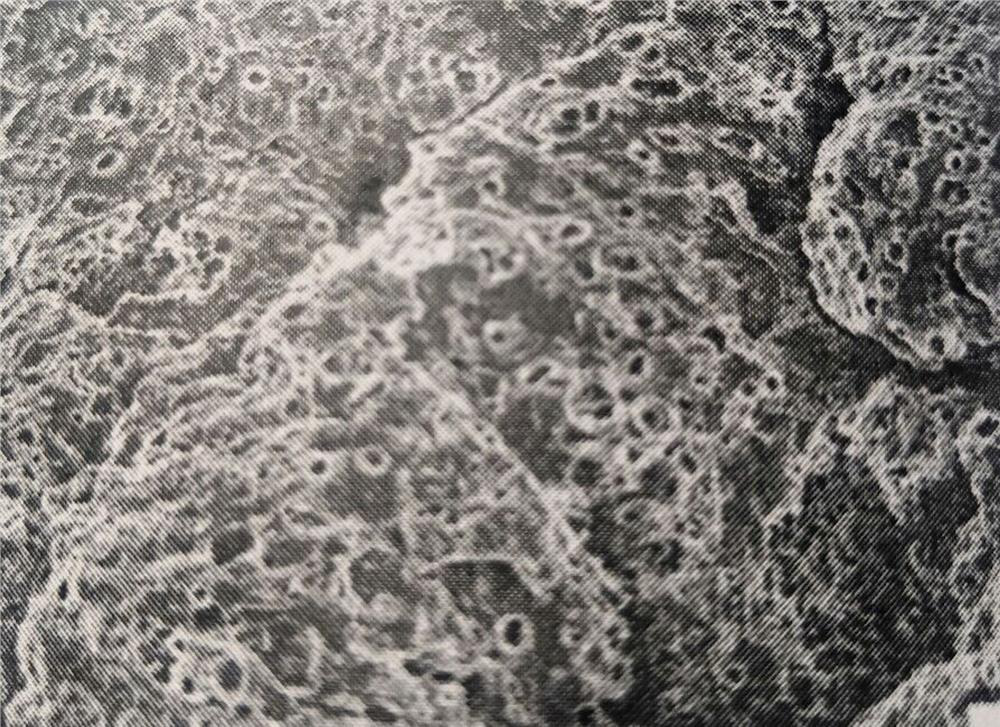A wood-plastic composite material for 3D printing and its preparation method and application
A wood-plastic composite material and 3D printing technology, applied in the field of 3D printing materials, can solve the problems of poor physical properties of molded products, poor product performance, high production costs, etc., achieve excellent lubricity and fluidity, improve product qualification rate, The effect of improving work efficiency
- Summary
- Abstract
- Description
- Claims
- Application Information
AI Technical Summary
Problems solved by technology
Method used
Image
Examples
Embodiment 1
[0037] Raw material components and ratio: 30 parts of bamboo powder (200 mesh), 1 part of coupling agent KH560, 43.5 parts of polyethylene plastic, 7 parts of compatibilizer maleic anhydride grafted polyethylene, 1 part of antioxidant 1076, 10 Parts of functional additive polyvinyl alcohol fiber, 2.5 parts of lubricant ethylene bisstearamide, 5 parts of toughening agent 1,2-diisononyl dicarboxylate;
[0038] Preparation: Dry the bamboo powder at 95°C for 2 hours to reduce the water content; further pulverize the dried bamboo powder through an ultrafine pulverizer to obtain bamboo powder with a smaller particle size, and vibrate the pulverized bamboo powder Sieve with a sieve to obtain 150-300 mesh bamboo powder, put the sieved bamboo powder in an oven at 110°C for 2 hours, and finally place it in a desiccator to cool to room temperature; weigh 30 parts of 200 mesh bamboo powder according to the mass fraction , added to the prepared sodium hydroxide solution with a mass concent...
Embodiment 2
[0043] Raw material components and ratio: 18 parts of lignin, 40 parts of polycarbonate plastic, 8 parts of polycaprolactone, 0.8 parts of maleic anhydride coupling agent, 5 parts of ethylene-acrylate-glycidyl methacrylate ternary Copolymer compatibilizer, 0.8 parts of antioxidant TNPP, 1.5 parts of polyethylene glycol, 1.7 parts of polyethylene-vinyl acetate, 25 parts of polyvinyl alcohol.
[0044] Preparation: Dry the lignin at 105°C for 2 hours to reduce the water content; further pulverize the dried lignin with an ultrafine pulverizer to obtain lignin with a smaller particle size, and vibrate the pulverized lignin The sieve was sieved to obtain 250~600 mesh lignin, and the sieved lignin was dried in an oven at 110°C for 2 hours, and finally placed in a desiccator to cool to room temperature; 18 parts of 350 mesh lignin were weighed according to the mass fraction. element, added to the prepared sodium hydroxide solution with a mass concentration of 15%, stirred for 1 h, was...
Embodiment 3
[0049] Raw material components and ratio: 48 parts of polylactide, 16 parts of modified straw powder, 3 parts of coupling agent KH550, 5 parts of maleic anhydride grafted polyester compatibilizer, 1 part of antioxidant 168, 1 part of polyethylene Diol, 1 part hydrogenated styrene-butadiene block copolymer, 25 parts alkali lignin;
[0050] Preparation: Dry the straw powder at 110°C for 2 hours to reduce the water content; further pulverize the dried straw powder through an ultrafine pulverizer to obtain straw powder with a smaller particle size, and vibrate the pulverized straw powder Sieve with a sieve to obtain 350-750 mesh straw powder. The sieved straw powder is dried in an oven at 110°C for 2 hours, and finally placed in a desiccator to cool to room temperature. Weigh 16 parts of 500-mesh straw powder according to the mass fraction, add it to the prepared 5% sodium hydroxide solution, stir for 1 hour, repeatedly wash with deionized water until neutral, then filter, and put...
PUM
| Property | Measurement | Unit |
|---|---|---|
| particle size (mesh) | aaaaa | aaaaa |
| particle size (mesh) | aaaaa | aaaaa |
| diameter | aaaaa | aaaaa |
Abstract
Description
Claims
Application Information
 Login to View More
Login to View More - R&D
- Intellectual Property
- Life Sciences
- Materials
- Tech Scout
- Unparalleled Data Quality
- Higher Quality Content
- 60% Fewer Hallucinations
Browse by: Latest US Patents, China's latest patents, Technical Efficacy Thesaurus, Application Domain, Technology Topic, Popular Technical Reports.
© 2025 PatSnap. All rights reserved.Legal|Privacy policy|Modern Slavery Act Transparency Statement|Sitemap|About US| Contact US: help@patsnap.com

